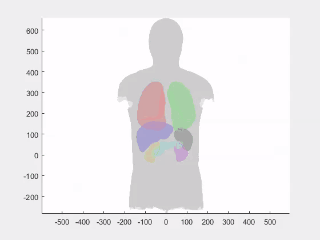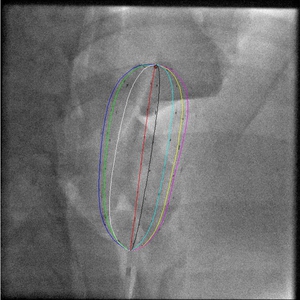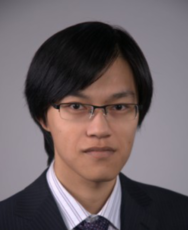Contact

+49 9131 85 27826

+49 9131 85 27270
Address
Universität Erlangen-Nürnberg
Chair of Computer Science 5 (Pattern Recognition)
Martensstr. 3
91058 Erlangen
Germany
Powered by

|
X-Ray Imaging Using a Patient Model
Patient models have been established as a useful tool for medical imaging. A number of methods haven shown that important applications such as effective dose, skin dose, and scatter kernel estimation can be improved using such a model. A patient model can, for example, be generated from pre-operative CT/MRI data or by adapting parameters of a computational phantom, e.g., according to demographic patient data comprising gender, age, height, and weight.
Commonly the patient model is generated before intervention. Furthermore, the model is considered static during the intervention, and it may not have been registered exactly to the actual patient position. These assumptions may introduce additional errors for interventional applications, e.g., with respect to skin dose estimation. Better results are expected by using a more shape-adaptive and better registered patient model.
The current research focus is on patient modelling and model based skin and scatter estimation.
This project is in cooperation with Siemens Healthcare GmbH, Forchheim. |  |
Bildverarbeitung für die Medizin: Algorithmen - Systeme - Anwendungen (Bildverarbeitung für die Medizin 2017), Heidelberg, 12.03-14.03, pp. 281-286, 2017 (BiBTeX, Who cited this?) Semi-Automatic Basket Catheter Reconstruction
Ablation guided by focal impulse and rotor mapping (FIRM) is a novel treatment option for atrial fibrillation, the most frequent heart arrhythmia. This procedure is performed minimally invasively and, at least partially, under fluoroscopic guidance. When performing a FIRM-based ablation procedure, a multi-electrode basket catheter is first placed in the right atrium and then moved into the left atrium. The basket catheter comprises eight splines and 64 electrodes. The 3-D position of these electrodes is important during treatment. We developed a novel model-based method for 3-D reconstruction of this catheter using two X-ray images taken from different views. Our approach requires only minimal user interaction. This project is in cooperation with Siemens Healthcare GmbH, Forchheim |  |
Bildverarbeitung für die Medizin 2016 (Workshop Bildverarbeitung für die Medizin), Charité - Universitätsmedizin Berlin, 13.03.2016, pp. 26-31, 2016 (BiBTeX, Who cited this?) Pattern Recognition (37th German Conference on Pattern Recognition (GCPR 2015)), Aachen, October 7–10, 2015, pp. 379-389, 2015, ISBN 978-3-319-24946-9 (BiBTeX, Who cited this?)
|


 +49 9131 85 27826
+49 9131 85 27826
 +49 9131 85 27270
+49 9131 85 27270



